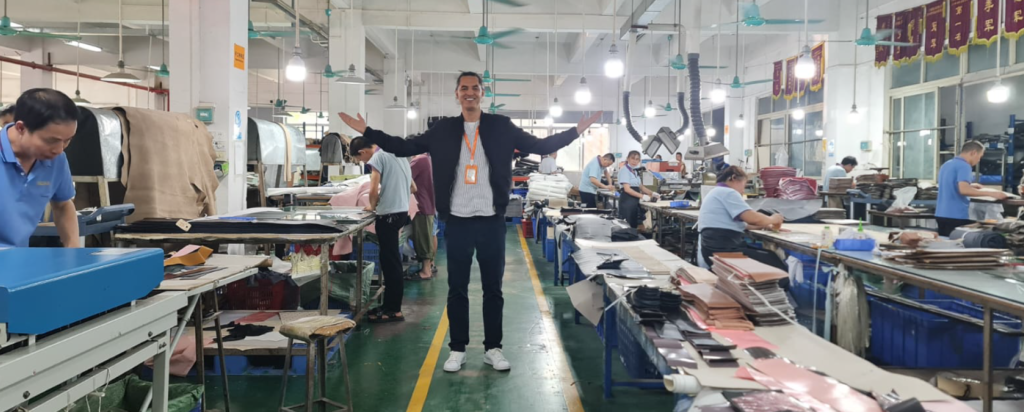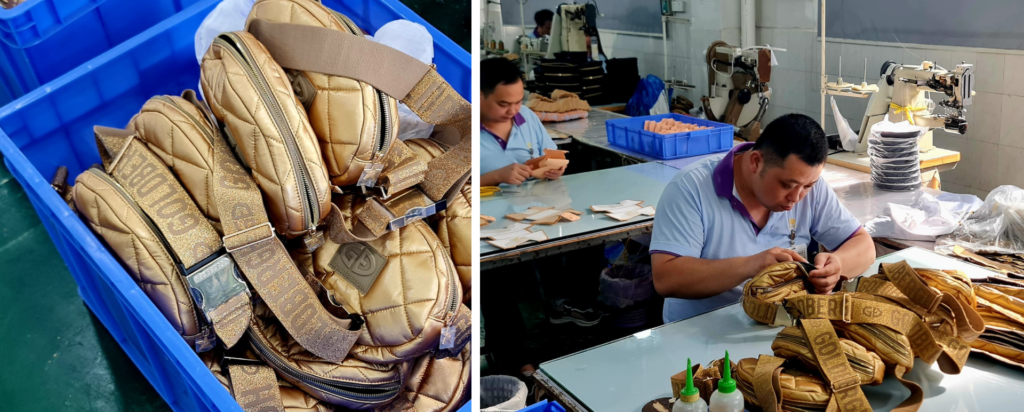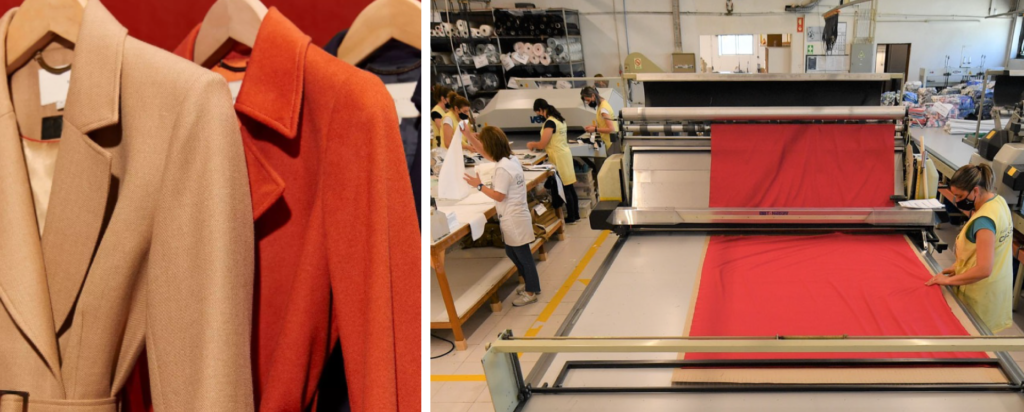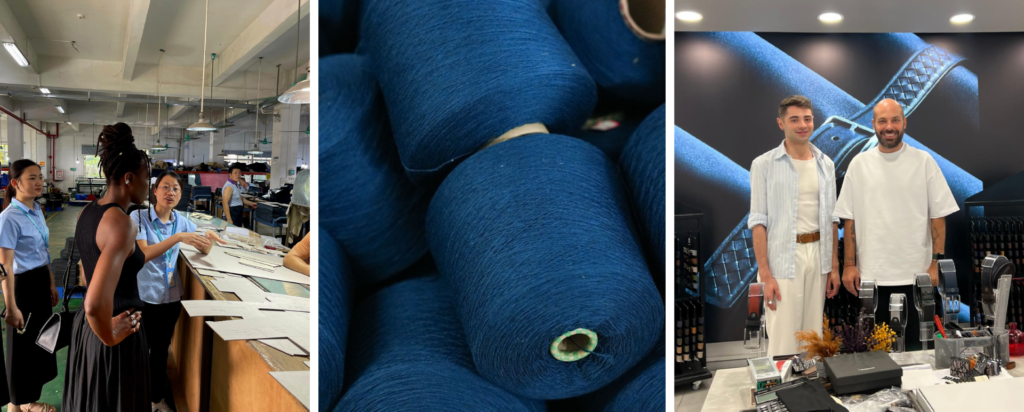Nearshoring, the practice of moving manufacturing closer to the home market, is gaining popularity in the garment industry. Brands are increasingly looking to reduce lead times, enhance control over production, and mitigate risks associated with offshore outsourcing. As garment manufacturing continues to evolve, nearshoring offers a promising alternative to traditional, long-distance production. However, it comes with its own set of challenges that manufacturers must address strategically.
This article provides an in-depth look into why nearshoring is becoming more popular in garment manufacturing, the challenges associated with it, and the strategies brands can adopt to overcome these hurdles. Additionally, we will explore the role that Deepwear, a leading consultancy in the fashion production industry, plays in facilitating successful nearshoring initiatives.

Why Nearshoring is Gaining Popularity
Faster Turnaround Times
One of the biggest advantages of nearshoring is the reduction in lead times. Offshore manufacturing, especially in countries like China or Vietnam, often involves extended shipping durations and potential delays. This is due to customs or geopolitical factors. Nearshoring significantly reduces these issues by placing production closer to the final market. Thus allowing garment manufacturers to respond more quickly to market demand. Especially in fast-paced industries like fashion where trends change rapidly.
Brands can cut production cycles by weeks or even months by nearshoring. Faster delivery times translate into quicker replenishment of stock and the ability to react more swiftly to consumer demands. This is crucial for staying competitive in industries where product freshness is key, such as fast fashion.
Improved Communication and Quality Control
Another significant benefit is enhanced communication between brands and manufacturers. Working with nearshore factories allows brands to have more direct oversight over the garment manufacturing supply chain. Thus ensuring that production processes align closely with brand standards. Nearshoring eliminates many of the communication issues that arise due to time zone differences or language barriers.
With closer proximity, brands can easily visit factories to inspect production quality, evaluate materials, and resolve any issues that may arise during the production process. Effective quality control in garment manufacturing is critical, especially in markets where brand reputation hinges on consistency and quality of apparel. Nearshoring offers a hands-on approach that can improve the overall reliability of the supply chain.
Nearshoring Alignment with Sustainability Goals
Sustainability is becoming a core focus in the fashion industry. Nearshoring can help brands meet their sustainability goals by reducing the carbon footprint associated with long-distance transportation. By producing garments closer to home, brands cut down on shipping emissions and foster more eco-friendly practices within their supply chains. This aligns with the increasing consumer demand for brands that prioritize environmental responsibility.
Additionally, nearshoring can enable more sustainable practices within the production process itself. Manufacturers can access local, ethically sourced materials that comply with stringent environmental and labor standards, contributing to a more responsible supply chain.
Key Challenges Faced by Garment Manufacturers in Nearshoring
Despite the many benefits, nearshoring is not without its challenges. Garment manufacturers must be aware of these obstacles to implement effective nearshoring strategies.

Higher Labor Costs
One of the primary challenges of nearshoring is the potential increase in labor costs. Many traditional offshore regions, such as Southeast Asia, offer lower labor wages, which allows brands to maintain higher margins. In contrast, nearshore regions, particularly in Europe or North America, typically have higher wages. This can impact the overall cost of production, making it difficult for brands focused on cost leadership to compete on price.
However, higher wages can be offset by reduced shipping costs, faster turnaround times, and less overhead associated with managing overseas operations. Manufacturers will need to carefully assess whether the cost savings from improved logistics outweigh the increased labor expenses in a nearshore model.
Capacity Constraints and Scalability
Another challenge is the potential capacity constraints of nearshore facilities. Many factories in traditional offshore regions are built to handle high volumes of production due to the low cost of labor and infrastructure. In contrast, nearshore facilities may be smaller and may not have the same economies of scale, making it more challenging to handle large, bulk orders.
This is particularly important for fast fashion and high-volume brands that need to produce large quantities of apparel quickly. Manufacturers may face difficulties scaling their operations in nearshore regions unless they diversify their supply chain or invest in automation technologies.
Sourcing Raw Materials
While nearshoring can reduce lead times and improve communication, sourcing raw materials remains a significant challenge. Many nearshore locations do not have the same access to inexpensive raw materials as offshore regions. For example, countries like China dominate the global textile market, offering low-cost fabrics and trims.
To overcome this, brands must consider hybrid models that combine nearshore production with offshore material sourcing. By strategically blending these approaches, manufacturers can reduce their overall costs while still enjoying the benefits of nearshoring.
Regulatory and Cultural Barriers of Nearshoring
While the geographic proximity of nearshoring may seem like an advantage, manufacturers may still face regulatory and cultural challenges. Different countries have varying labor laws, environmental regulations, and business practices. Navigating these can require additional effort. Particularly for companies that are accustomed to a certain set of rules in their offshore operations.
Cultural differences in business communication and negotiation styles can also pose challenges, even in geographically proximate countries. Manufacturers need to be aware of these factors when selecting nearshore partners.

Strategies to Overcome Nearshoring Challenges
Leverage Automation and Technology
One way to overcome the challenge of higher labor costs is by integrating automation and digital technologies into the production process. Automated machinery and digital tools, such as pattern-cutting software, can reduce the need for manual labor and improve efficiency in garment manufacturing. This can help offset the higher wages in nearshore regions while maintaining production speed and quality.
Deepwear is a key player in this area, helping brands implement modern production technologies to streamline their operations. By assisting manufacturers with technical support and access to the latest tools, the company enables brands to optimize their nearshore production. Thus reducing costs and enhancing efficiency.
Build Strong Relationships with Local Manufacturers
Success in nearshoring depends heavily on building strong relationships with local manufacturing partners. Close collaboration ensures that both the brand and the manufacturer are aligned on production goals, timelines, and quality expectations. Regular communication can also help mitigate some of the risks associated with capacity constraints and material sourcing.
Deepwear plays a critical role here by connecting brands with trusted manufacturers who meet their production standards. Our extensive network of vetted nearshore partners helps brands find the right fit for their specific needs, ensuring smooth operations and fewer delays.

Optimize Hybrid Supply Chains
For brands that face material sourcing challenges in nearshore regions, adopting a hybrid supply chain strategy can be highly effective. This involves blending nearshore and offshore outsourcing for different stages of production. For example, a brand might source raw materials from an offshore location where costs are lower, while the assembly of garments takes place in a nearshore facility to reduce shipping times.
This strategy enables manufacturers to enjoy the best of both worlds—cost-effective material sourcing and faster turnaround times. It also provides more flexibility, allowing brands to scale production up or down based on market demand.
Invest in Local Training and Development
To address capacity and quality issues in nearshore regions, manufacturers should invest in training and development programs for local workers. This ensures that nearshore facilities can meet the same high standards as offshore factories. Training in modern garment production techniques, quality control procedures, and sustainability practices can significantly improve the output from nearshore manufacturing plants.
The Role of Deepwear in Nearshoring
Deepwear is a key partner for brands looking to optimize their nearshore production strategies. From sourcing manufacturers to overseeing quality control, Deepwear offers end-to-end support that ensures the success of nearshore outsourcing initiatives.
With our extensive network of vetted manufacturers, we help brands find partners who can meet their production demands. This is particularly valuable for companies looking to scale their operations or maintain high quality across multiple production lines. Deepwear’s ability to connect brands with reliable manufacturers reduces the risks associated with nearshore outsourcing and ensures a smoother production process.
Additionally, Deepwear’s expertise in sustainability is a major advantage for brands focused on reducing their environmental impact. By providing access to eco-friendly materials and promoting sustainable production practices, Deepwear helps brands align their nearshore operations with their sustainability goals. Our focus on ethical manufacturing ensures that brands can produce high-quality garments while maintaining their commitment to environmental and social responsibility.

Conclusion and Recommendations
Nearshoring offers a valuable alternative to traditional offshore outsourcing for garment manufacturers. With its potential to reduce lead times, improve communication, and enhance sustainability, nearshoring is well-suited for brands that prioritize speed and control in their production processes. However, it also presents challenges, such as higher labor costs and material sourcing issues, which manufacturers must address strategically.
By leveraging automation, building strong partnerships, and adopting hybrid supply chain models, brands can overcome these challenges and maximize the benefits of nearshoring. Deepwear plays an integral role in helping garment manufacturers navigate these complexities. Our expertise in sourcing, quality control, and sustainability ensures that brands can optimize their nearshore production while maintaining high standards and reducing their environmental footprint.
For manufacturers looking to adopt nearshoring, a thoughtful approach that balances cost-efficiency, sustainability, and quality control is essential. With the right strategies and partners, brands can unlock the full potential of nearshoring and stay ahead in the competitive garment manufacturing industry.
Did You Find this Article Helpful?
If you found this article helpful please share it with your friends, family and colleagues. You can learn more about us and what we do on Deepwear flagship website or on our official Facebook page. Alternatively, you are more than welcome to request a meeting with a member of our team using the form below.